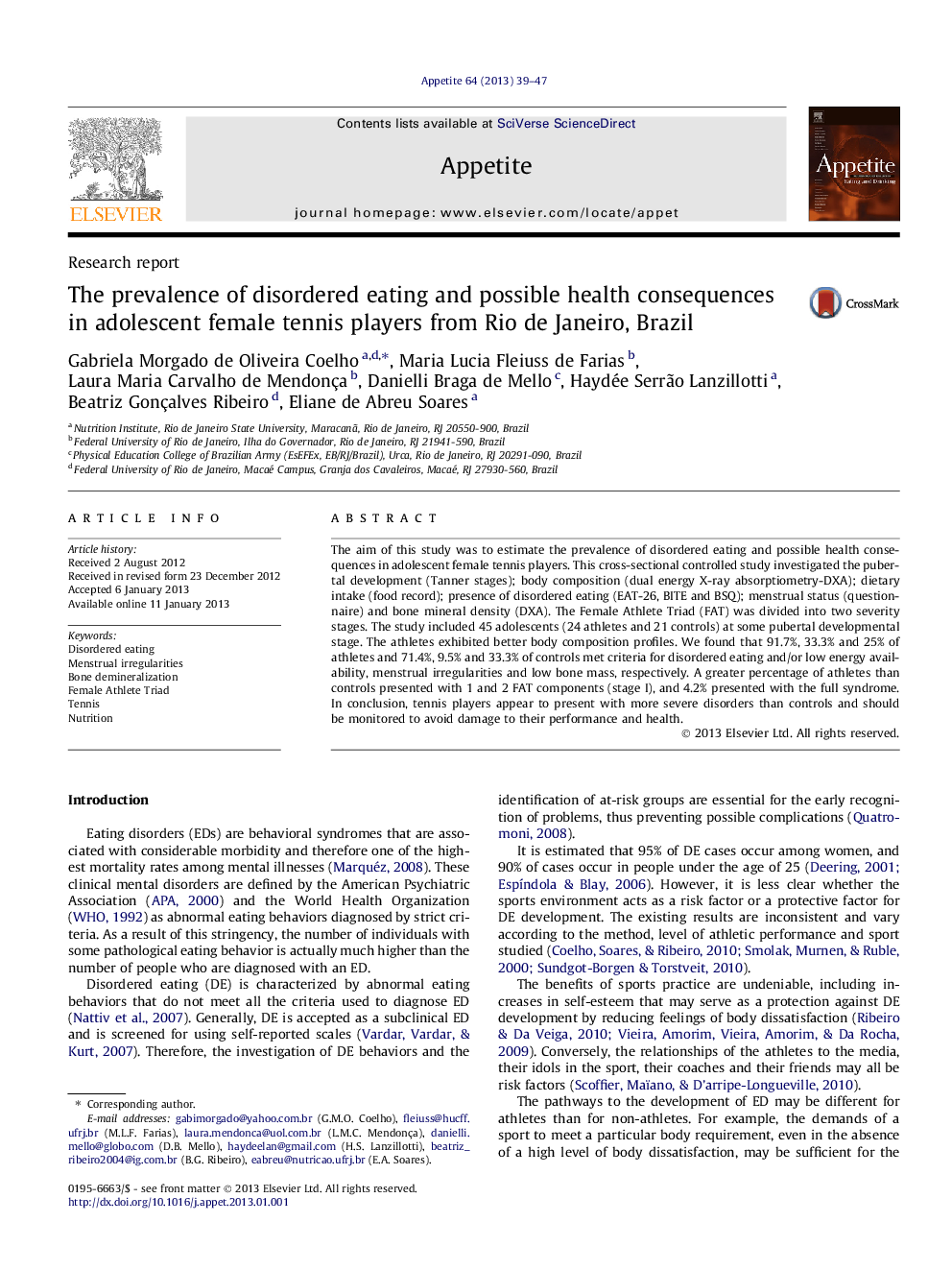| Article ID | Journal | Published Year | Pages | File Type |
|---|---|---|---|---|
| 939745 | Appetite | 2013 | 9 Pages |
The aim of this study was to estimate the prevalence of disordered eating and possible health consequences in adolescent female tennis players. This cross-sectional controlled study investigated the pubertal development (Tanner stages); body composition (dual energy X-ray absorptiometry-DXA); dietary intake (food record); presence of disordered eating (EAT-26, BITE and BSQ); menstrual status (questionnaire) and bone mineral density (DXA). The Female Athlete Triad (FAT) was divided into two severity stages. The study included 45 adolescents (24 athletes and 21 controls) at some pubertal developmental stage. The athletes exhibited better body composition profiles. We found that 91.7%, 33.3% and 25% of athletes and 71.4%, 9.5% and 33.3% of controls met criteria for disordered eating and/or low energy availability, menstrual irregularities and low bone mass, respectively. A greater percentage of athletes than controls presented with 1 and 2 FAT components (stage I), and 4.2% presented with the full syndrome. In conclusion, tennis players appear to present with more severe disorders than controls and should be monitored to avoid damage to their performance and health.
► Prevalence of disordered eating was similar between athletes and controls. ► Athletes presented with lower body fat percentages and higher lean body masses. ► Controls showed higher prevalence of body image distortion or dissatisfaction. ► The prevalence of low energy availability was higher in the athlete group. ► Athletes had higher prevalence of 1, 2 and 3 Female Athlete Triad components.
